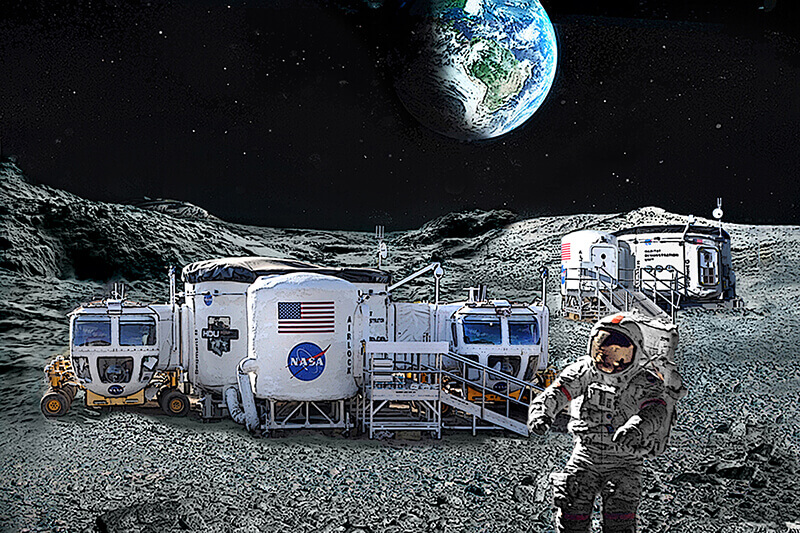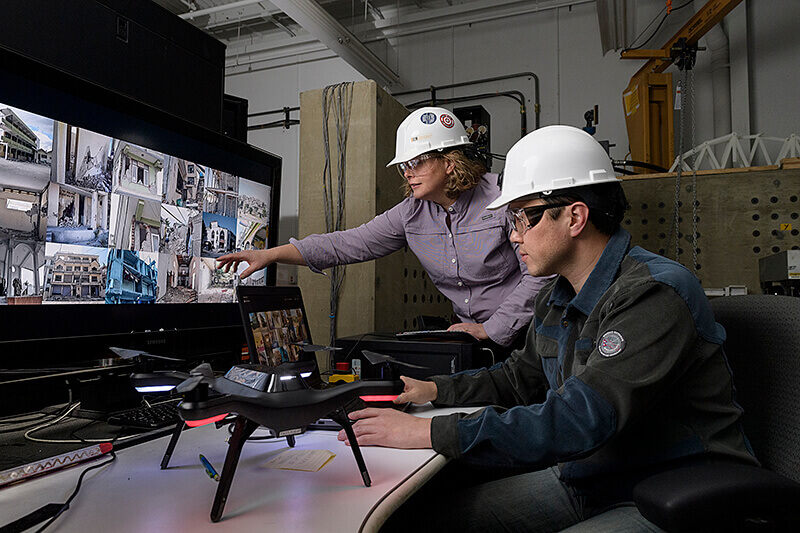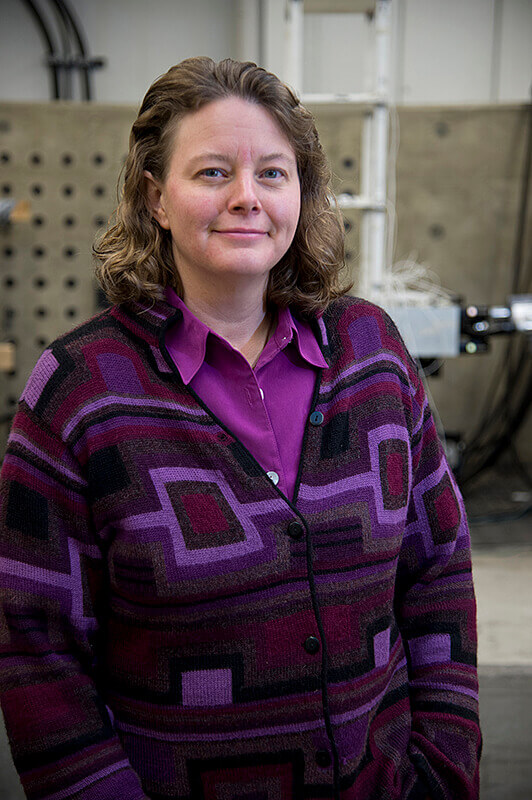
Purdue research and testing is taking the dream of living in space beyond space stations and making the potential of future moon - and possibly Mars - colonies a reality. (Purdue University photo/Mark Simon)
Note to Journalists: Photos of Shirley Dyke and a photo illustration for the release are available on Google Drive.
Engineering professor works to bridge the gap between Earth, moon
WEST LAFAYETTE, Ind. - Shirley Dyke doesn't see the moon as a crater-filled sphere. She expects lunar dwellings to begin emerging in a decade, helping reach out to further space habitation.
And she wants her research to help bridge that gap.
Dyke, head of Purdue University's RETH (Resilient ExtraTerrestrial Habitats) Institute, says her research focuses on enabling the future.
"I'm not one who seeks to design the best something," said Dyke, a professor of mechanical and civil engineering. "I aim to bring together smart people from different disciplines to pursue goals that would not be possible otherwise. In this age, this is the most effective way to push science forward.
 Lunar habitats are only part of the research by Shirley Dyke, a professor of mechanical and civil engineering. She is working to utilize machine learning to classify earthquake damage photos for each research access. (Purdue University photo/John Underwood)
Lunar habitats are only part of the research by Shirley Dyke, a professor of mechanical and civil engineering. She is working to utilize machine learning to classify earthquake damage photos for each research access. (Purdue University photo/John Underwood) Her current work focuses on understanding what characteristics make habitats safe through cyber physical testing, which combines computer models with physical test specimens.
Three habitat characteristics are of particular importance: resilience, intelligence and autonomy. Cyber physical testing, done at Purdue's Herrick Labs, allows some components of potential lunar habitats to be physically tested, while others are simultaneously examined in a virtual context.
A habitat's resilience level is key to the work, creating smart structures that can stand up to any number of hazards. Meteoroid impacts, quakes and issues with moon dust (which is very sharp and abrasive) are just some of the many hazards that can create different effects and hazards that impact the performance of the space habitat, causing a risk to humans.
"We won't have to build the entire habitat in the lab, but rather use cyber physical testing to virtualize some of those factors," Dyke said. "Results like power loss, thermal issues and pressure loss can be captured with computer models."
For the research, RETH will build quarter-scale habitats as realistically as possible in Herrick Labs.
A single cyber physical test can rapidly change virtual components to adjust for location, ranging from a facility on the moon's surface to inside lava tubes. Computer models combined with the physical habitat representations can account for habitat growth, age and deterioration.
 Shirley Dyke. (Purdue University photo/Mark Simon)
Shirley Dyke. (Purdue University photo/Mark Simon) Dyke said the final goal is a habitat that doesn't need constant human oversight.
"Eventually, we want to develop smart habitats that can respond to changes, damage and anything that could go wrong during a mission and still maintain the integrity and safety of the science inside," she said.
"By incorporating smart capabilities into the design, we can have live sensors to monitor in case a breach occurs, determine the impact of that breach, how large it is and decide what to do about it," Dyke said. "Robots then could come and recover and repair the structure."
RETH is an interdisciplinary partnership with 21 researchers from Purdue and three other universities and two industrial partners to study what is necessary for otherworldly habitats.
"By pursuing a new technique like cyber physical testing for RETH, I'm hoping we can create that bridge between the disciplines which is needed to create new knowledge," she said.
Dyke also is bridging gaps for work regarding habitats here on Earth. The Automated Reconnaissance Image Organizer utilizes machine learning and to classify and label images and data collected at earthquake damage sites automatically so the data could be available so other researchers can access it.






